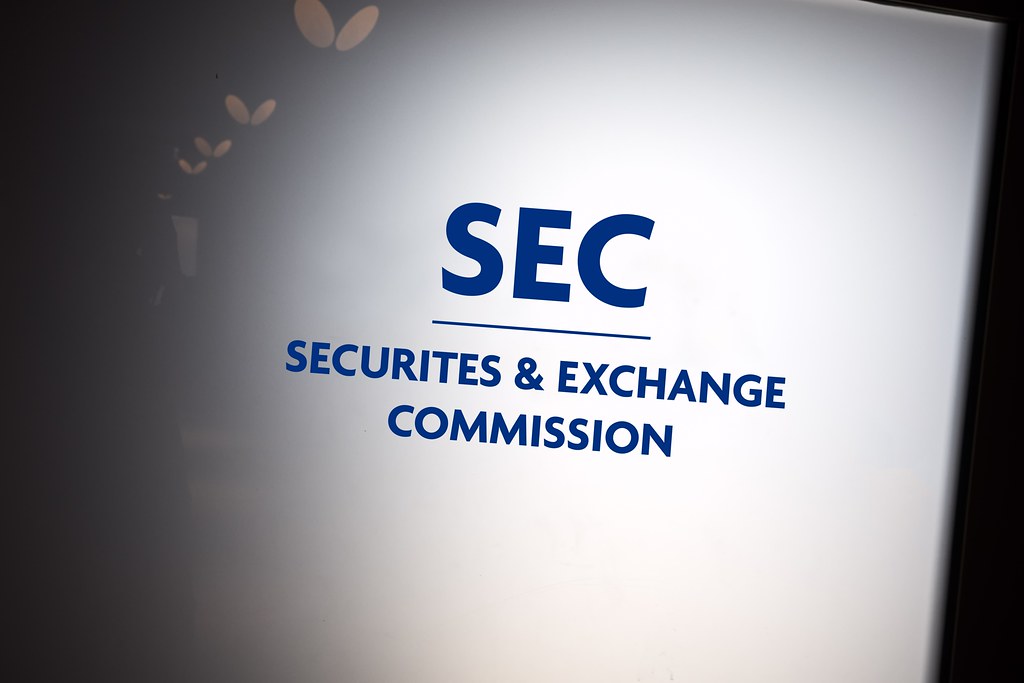Main Points:
- Innovative Regulatory Breakthrough: The U.S. SEC has approved Figure Markets’ yield-bearing stablecoin, YLDS, as a registered security, marking a milestone in digital asset regulation.
- Attractive Yield: YLDS offers holders an annual yield of 3.85%, potentially transforming how users earn interest on their crypto holdings.
- Industry Pioneering: Figure Markets is the first U.S. company to receive approval for a yield-bearing stablecoin, with industry leaders exploring similar concepts.
- Broad Regulatory Focus: U.S. authorities, along with global regulators in the EU, Hong Kong, and Singapore, are actively shaping comprehensive frameworks for the rapidly growing stablecoin market.
- Legislative Efforts: The STABLE Act and other initiatives are under discussion to provide clearer guidelines for stablecoin issuers, though industry experts see room for improvement.
- Global Context and Future Outlook: This development is part of a broader trend toward integrating traditional finance principles with blockchain technology, promising more versatile financial tools for users.
1. New Developments in Stablecoin Innovation
The digital asset market has been experiencing rapid innovation, and one of the most significant recent developments is the U.S. Securities and Exchange Commission’s (SEC) approval of a yield-bearing stablecoin as a registered security. This pioneering move by the SEC, approving Figure Markets’ YLDS, signals a shift in regulatory attitude toward cryptocurrencies that combine stable value with the potential for yield generation. As the industry expands and evolves, these regulatory changes are designed to integrate new crypto products into the traditional financial system, thereby broadening investment opportunities and enhancing consumer protection.
2. SEC’s Groundbreaking Approval of Yield-Bearing Stablecoin
The SEC’s decision to approve YLDS represents a major turning point in the cryptocurrency world. Traditionally, stablecoins have been used to maintain a steady value, typically pegged to the U.S. dollar or other fiat currencies, acting as a bridge between the volatility of other cryptocurrencies and the stability of traditional money. With YLDS, however, investors are not only provided with a stable asset but also a mechanism to earn interest on their holdings—a feature that, until now, has largely been reserved for traditional bank deposits and bonds.

The SEC’s approval also indicates a degree of flexibility in the regulatory approach toward digital assets. By classifying YLDS as a security, the SEC ensures that the stablecoin adheres to established financial regulations designed to protect investors, while simultaneously acknowledging the innovation behind products that combine stability with yield-generation capabilities.
3. Detailed Overview of Figure Markets’ YLDS
Figure Markets, the company behind YLDS, has been at the forefront of integrating traditional financial incentives with blockchain technology. The newly approved YLDS stablecoin is pegged to the U.S. dollar and is designed to generate a fixed annual yield of 3.85%. This yield-bearing mechanism is achieved through structured financial strategies that enable users to earn interest on their digital asset holdings without the need to engage directly with traditional banking institutions.
Mike Cagney, the CEO of Figure Markets, has emphasized the potential disruptive nature of such an innovation. In a recent interview with Fortune, he pointed out that if a digital asset can be self-managed while generating interest and facilitating transactions, it might eventually reduce the need for conventional banks. This sentiment reflects a broader trend within the crypto industry—a drive to decentralize and democratize financial services through innovative digital products.
The approval of YLDS not only solidifies Figure Markets’ position as a pioneer in the U.S. market but also sets a benchmark for future projects. Other companies, such as those led by established figures in the crypto world like Tether’s co-founder, are now exploring similar concepts. These efforts suggest that the yield-bearing stablecoin could soon become a common offering in the digital asset space, opening up new avenues for earning passive income on crypto holdings.
4. The Broader Context: Stablecoin Regulation and Global Trends
The SEC’s decision comes at a time when the stablecoin market is experiencing explosive growth. Stablecoins have become an essential part of the digital economy, offering liquidity and a safe harbor from the volatility inherent in cryptocurrencies like Bitcoin and Ethereum. However, this growth has also raised regulatory concerns about transparency, asset backing, and consumer protection.
A recent report by S&P Global has underscored the regulatory challenges posed by stablecoins. These challenges include ensuring proper reserve management, establishing clear standards for transparency, integrating these digital assets with the conventional financial system, and addressing the fragmented nature of regulatory jurisdiction. While the U.S. is actively working on these issues, other regions are moving swiftly. The European Union, Hong Kong, and Singapore have all begun implementing comprehensive regulatory frameworks that address the unique characteristics of stablecoins.
The global regulatory push highlights the importance of creating an environment where stablecoins can thrive safely and efficiently. By approving yield-bearing stablecoins like YLDS, the SEC is not only responding to market innovation but also preparing the ground for more extensive and clearly defined regulatory measures that could be adopted internationally.
5. Commentary from Industry Leaders
Industry leaders have responded with both enthusiasm and caution to the SEC’s groundbreaking approval. Mike Cagney’s comments resonate strongly with those who view blockchain technology as a disruptive force capable of reshaping the financial landscape. His assertion that such innovative products might eventually obviate the need for traditional banks is indicative of a broader shift in how financial services may be delivered in the future.
In addition to Cagney’s perspective, other influential figures in the crypto community have begun to explore yield-bearing models. Notably, Tether co-founder Livio Collins has announced plans to launch a yield-bearing decentralized stablecoin later this year through his project, the Pi Protocol. Collins’ vision is to allow users to receive tokens that carry an inherent yield, thereby further decentralizing the power structure that currently governs financial intermediation. Such initiatives are a testament to the rapidly evolving landscape where technology and finance increasingly converge.
6. Legislative and Regulatory Developments in the U.S.
Within the U.S., regulatory and legislative bodies are actively discussing how to bring greater clarity to the stablecoin market. On February 5th, members of the Republican Party—Representative French Hill and Representative Brian Stil—introduced a draft of the “STABLE Act.” The purpose of this legislative proposal is to provide clear regulatory guidelines for stablecoin issuers, addressing issues such as full reserve backing and operational restrictions on token issuers.
However, not all feedback on the STABLE Act has been positive. Timothy Massad, the former chairman of the Commodity Futures Trading Commission (CFTC), has commented that while the act contains several supportive elements, it remains insufficient in addressing many critical points. His observations came during a House Committee sub-hearing in Washington, D.C. on February 11th, highlighting the ongoing debate regarding the adequacy of current proposals in safeguarding the interests of both investors and the broader financial system.
These legislative efforts reflect an understanding among U.S. policymakers that as the digital asset market continues to expand, clear and robust regulatory frameworks will be essential. While the approval of YLDS marks a significant step forward, it also underscores the need for continued dialogue and iterative policy development to keep pace with technological innovation.
7. Comparison with Global Approaches
Globally, regulators are approaching stablecoin oversight with varying degrees of urgency and comprehensiveness. In regions like the European Union, regulators are developing detailed frameworks that emphasize consumer protection and systemic risk management. Similar measures are being observed in financial hubs such as Hong Kong and Singapore, where authorities are not only focusing on stablecoin transparency and reserve management but also on integrating these digital assets into the larger financial system.
The U.S. has sometimes been seen as lagging in comparison to these jurisdictions. However, the SEC’s recent approval of YLDS is a clear indication that American regulators are adapting and are prepared to endorse innovative products that comply with established securities laws. This move could pave the way for further regulatory adjustments that bring U.S. standards more in line with international best practices while still addressing domestic concerns about market stability and investor protection.
8. Recent Trends and Future Outlook
Recent trends in the stablecoin market reveal a growing appetite among investors for products that combine stability with yield generation. This is driven by a dual desire to safeguard capital while also seeking incremental returns in an environment where traditional interest rates remain relatively low. In addition, the technological underpinnings of blockchain have reached a level of maturity that supports the development of sophisticated financial instruments—such as yield-bearing tokens—that can operate seamlessly alongside conventional financial products.
Looking ahead, the future of yield-bearing stablecoins appears promising. As regulatory frameworks become clearer and more comprehensive, there is a strong likelihood that more institutions will launch similar products, further diversifying the digital asset landscape. This trend is expected to drive increased adoption among retail investors and institutions alike, as yield-bearing digital assets offer a novel way to generate revenue while also participating in the burgeoning world of decentralized finance (DeFi).
Moreover, the convergence of traditional financial principles with innovative blockchain technology is likely to spark a broader transformation within the financial industry. As digital assets gain legitimacy through regulatory approval and integration with existing financial systems, they may ultimately redefine how investors approach wealth management, asset diversification, and risk mitigation.
9. Implications for the Crypto and Financial Sectors
The SEC’s approval of Figure Markets’ yield-bearing stablecoin, YLDS, is more than just a regulatory milestone—it is a harbinger of a new era in financial innovation. By merging the stability of traditional fiat-pegged coins with the income-generating potential of interest-bearing instruments, YLDS offers a unique value proposition to investors and everyday users alike. This move sets a precedent that could influence future policy decisions and encourage the development of similar products worldwide.
In summary, this development represents a significant shift in both the regulatory approach to digital assets and the overall trajectory of the crypto market. As the global financial landscape continues to evolve, the interplay between regulatory oversight and technological innovation will be critical in shaping a more inclusive, efficient, and secure financial ecosystem. For investors, financial institutions, and crypto enthusiasts, the advent of yield-bearing stablecoins opens up new avenues for revenue generation and diversification, heralding a future where blockchain-based financial tools become integral to everyday transactions and long-term investment strategies.


